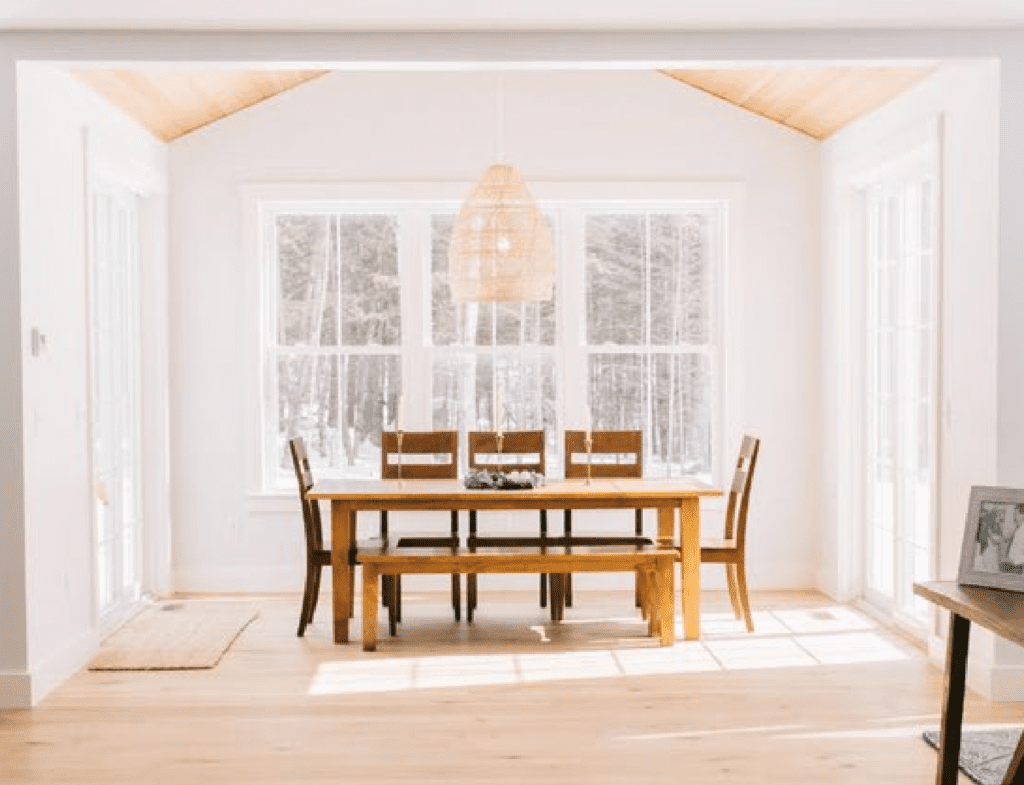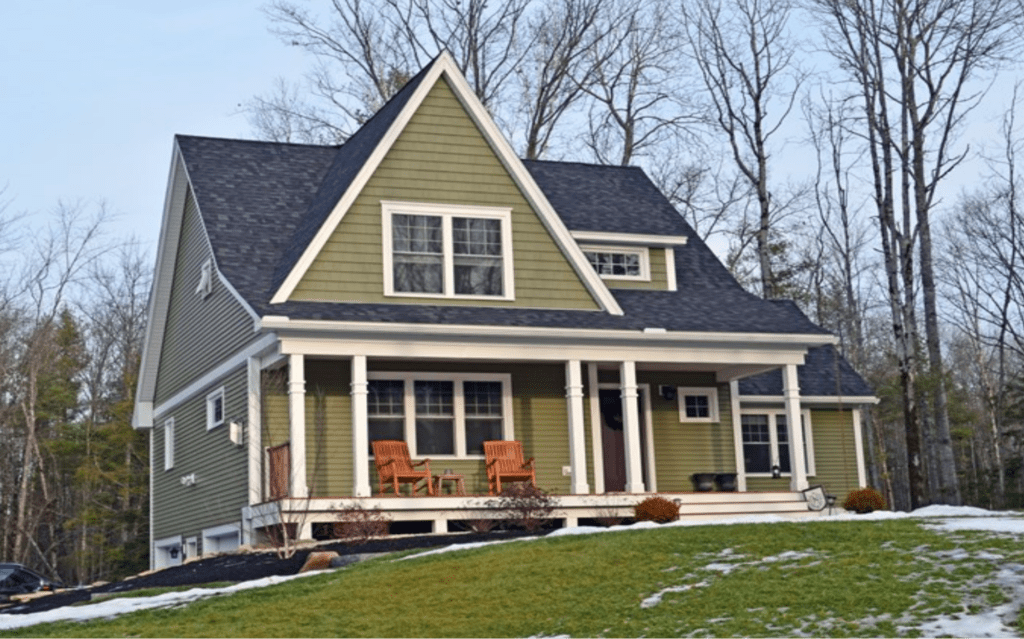
Vinyl window replacements are a popular choice for homeowners, contractors and architects alike. When it’s time to replace a home’s windows, property owners often want an option that’s both cost-effective and stylish, and vinyl windows fit the bill.
These versatile windows have a long history in the housing market. However, despite their popularity, many people still have some misconceptions and questions about this window type.
So, what are vinyl windows exactly? What are the advantages of vinyl window replacements over other types? And what styles, features and options are available with vinyl windows?
Let’s get into it. This is a complete guide to vinyl replacement windows with everything you need to know to be completely informed for all your future projects.
What Are Vinyl Windows?

After World War II, Germany didn’t have very many resources to rebuild its cities. However, they needed to rebuild their homes quickly and cost-efficiently. Without wood and aluminum, they decided to give synthetic material a try, and in 1954, Germans fabricated the first vinyl windows.
It took a while for the American market to grab onto vinyl windows, though. At first, they were bulky and unattractive and thought of as an inferior material. However, after many years of tinkering and redesigning, vinyl windows began to gain popularity.
Today, vinyl windows are made from resilient PVC, a durable plastic polymer commonly found in many building products, including wire insulation, house trim, plumbing pipes, doors, siding and more. The PVC and other materials are mixed with pigments and chemicals to create a visually appealing window frame that won’t bend, warp, peel or crack in bad weather or direct sunlight.
Today’s vinyl windows are a cost-effective, easy-to-maintain, energy-efficient and attractive option. That’s why many people choose vinyl window replacements over alternative materials on the market.
It’s also important to know the difference between vinyl windows for new construction (full-frame replacement windows) and pocket vinyl window replacement.
New construction vinyl windows are full-framed, and they include nailing fins that allow the windows to be air and watertight.
Pocket vinyl replacement windows, also known as insert windows or retrofit windows, are inserted, sealed and caulked into an existing frame. These are perfect for quick and affordable upgrades. However, they’re not always appropriate.
For instance, if:
- the existing frames are old and rotting out of place
- the windows are for a new home
- the current windows are out of style
- or a previous company poorly installed the existing windows…
…a person might want to consider a full-frame replacement or new construction vinyl windows versus a pocket vinyl replacement.
In either case, whether a person is looking into a full-frame replacement or a pocket installation, vinyl windows are a top choice. But how do vinyl windows compare to the other options on the market? What are the advantages of vinyl windows?
Vinyl Window Benefits

Vinyl replacement windows are nearly half the price of comparable wood windows, and are cheaper than fiberglass and aluminum alternatives as well. However, don’t mistake their cost-efficiency as an indication of lesser quality.
Premier manufacturers and suppliers of vinyl windows can produce high-quality windows that can compete with wood and aluminum in appearance, durability and more.
Vinyl windows are perhaps most known for their energy efficiency. They’re incredibly effective at reducing the transfer of heat and stopping light penetration, which helps regulate a room’s internal temperature.
Moreover, high-quality vinyl windows are ENERGY STAR® rated and can help reduce a home’s electricity bills. Some states even allow for tax reductions related to ENERGY STAR®-rated windows and energy-efficient upgrades.
Vinyl windows are also incredibly low maintenance. Unlike wood windows, which deal with rot and pests, vinyl windows are resistant to inclement conditions. A thorough wash now and again is all they need to stay in top shape.
They also don’t need to be restained, repainted or refinished to look great for many years. Compare that to wood windows, which have to be re-stained and repainted every three to four years to keep up their appearance.
Vinyl windows come in various colors and styles, too (which we’ll talk about more in a bit). They’re prefabricated and ready to install, so there’s no need to paint or stain before installation. One simply needs to select the color and style they want, and that’s it — no extra cutting or painting is required.
As a result, when compared to aluminum or wood, vinyl window replacements are much easier to install.
Recent data also shows that vinyl replacement windows increase property value and have a resale value of more than 72%, compared to wood window replacements, which only have a resale value of 69%.
There are plenty of benefits to vinyl replacement windows. They:
- are the most cost-effective option on the market.
- are incredibly energy efficient.
- can decrease electricity costs and result in tax deductions.
- significantly increase property value and boost curb appeal.
- come in a variety of styles, colors, and shapes.
- are low maintenance and can last up to twenty years.
- can withstand direct sunlight, inclement weather and pests.
Plus, contractors love their straightforward installation. In addition to all of these benefits, there’s no rotting, warping, peeling, or bending.
When compared to wood, aluminum, and fiberglass, vinyl replacement windows come out on top in many important ways. They’re a stylish, cost-effective, energy-efficient, durable and versatile option that’s easy to install and maintain.
Once the question of function is out of the way, the attention turns to appearance. What types of styles, features and options are available with vinyl windows?
Vinyl Window Styles

The question isn’t, “What styles do vinyl window replacements come in?” The question is, “What style don’t they come in?” Vinyl windows can be manufactured, colored and designed to fit any motif.
From double-hung windows to bay windows and more, there’s no shortage of vinyl window types on the market.
At Paradigm, we offer the following styles of vinyl windows:
- Double Hung Windows
- Single Hung Windows
- Casement Windows
- Awning Windows
- Hopper Windows
- Slider Windows
- Picture Windows
- Specialty Windows
- Bow and Bay Windows
Vinyl replacement windows are available in various colors and finishes, including finishes that mimic the look of wood grain. There are also other things to consider, including the number of glass panes, varying casing options, different screens and more, which can contribute to the final look of the vinyl windows.
Essentially, if you can dream it, a quality vinyl window manufacturer can make it.
The Most Important Factor in Vinyl Replacement Windows

Vinyl replacement windows are a cost-effective, durable, energy-efficient window option, with an impressive range of sizes, styles, finishes and colors. However, it’s important to know that all vinyl windows are not created equally.
As with most things, the true differentiator is manufacturer quality. Vinyl windows have a lot of advantages; however, if the manufacturer lacks quality standards and craftsmanship, the vinyl windows will not have all the benefits we’ve discussed.
It’s essential to choose a trusted manufacturer from the start. At Paradigm, we’ve been perfecting our vinyl replacement windows since 1981, and take pride in our quality, style and affordability.Contact us today for more information on vinyl replacement windows for your project.
